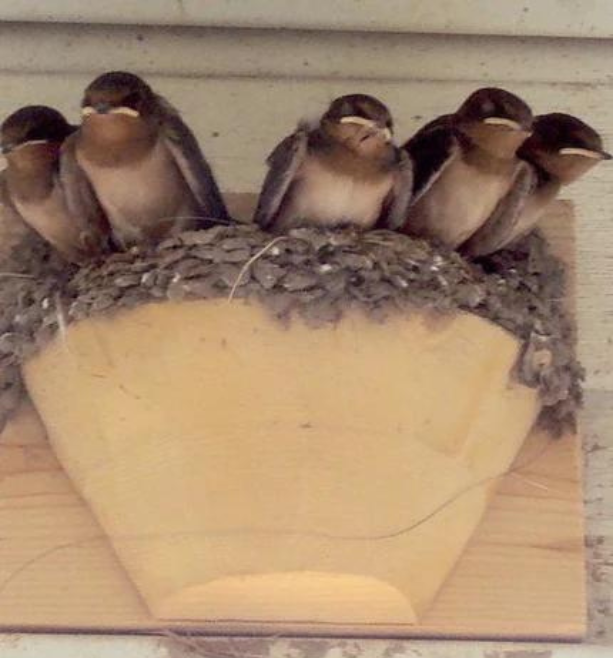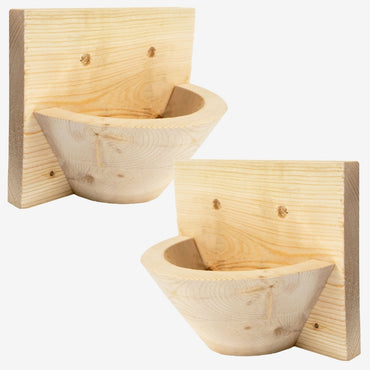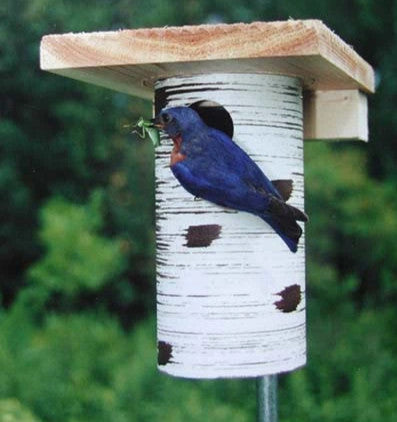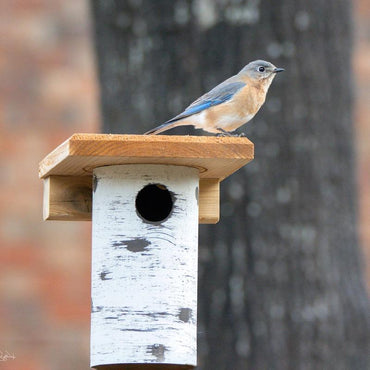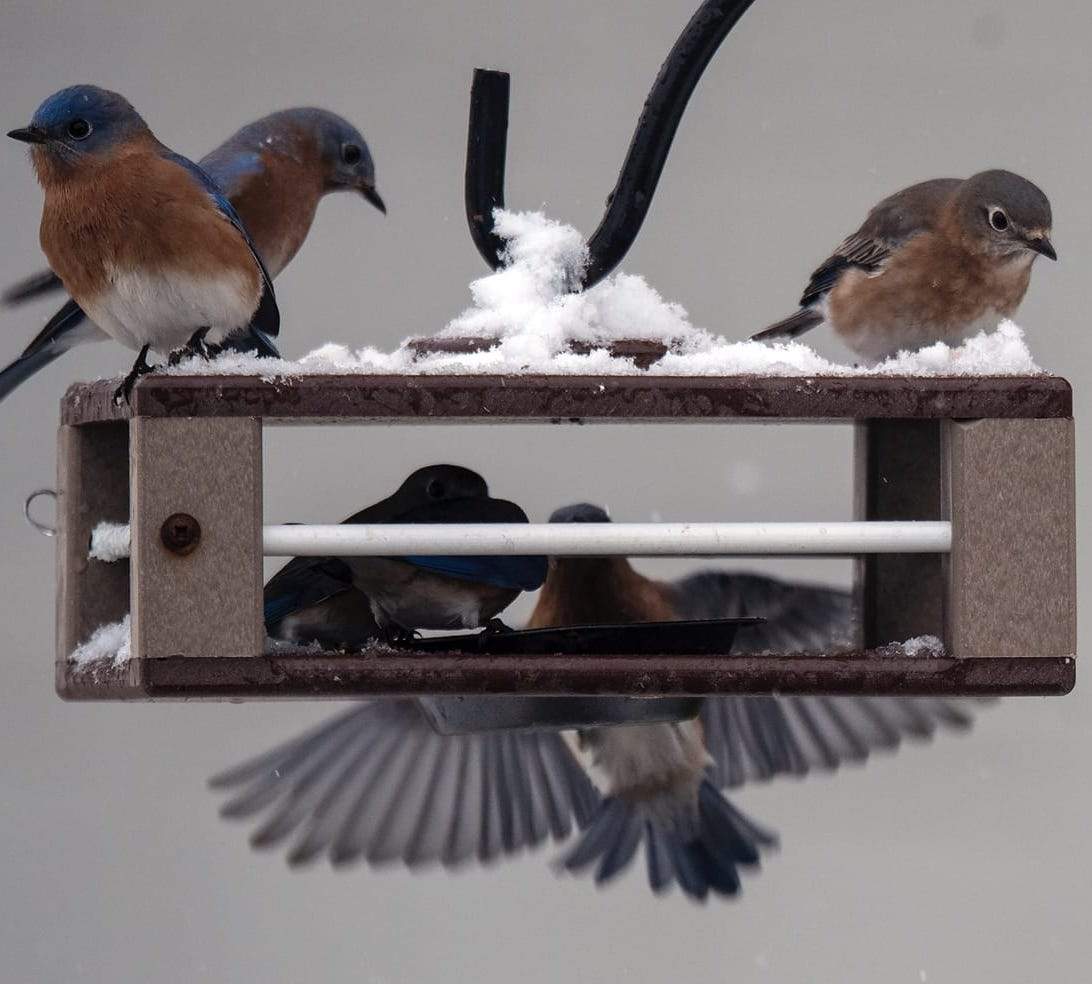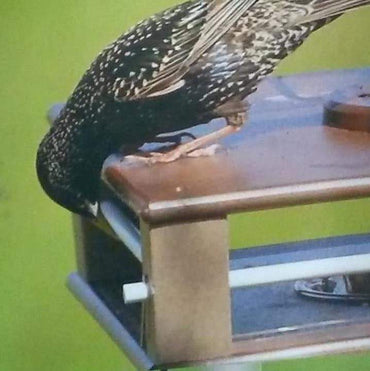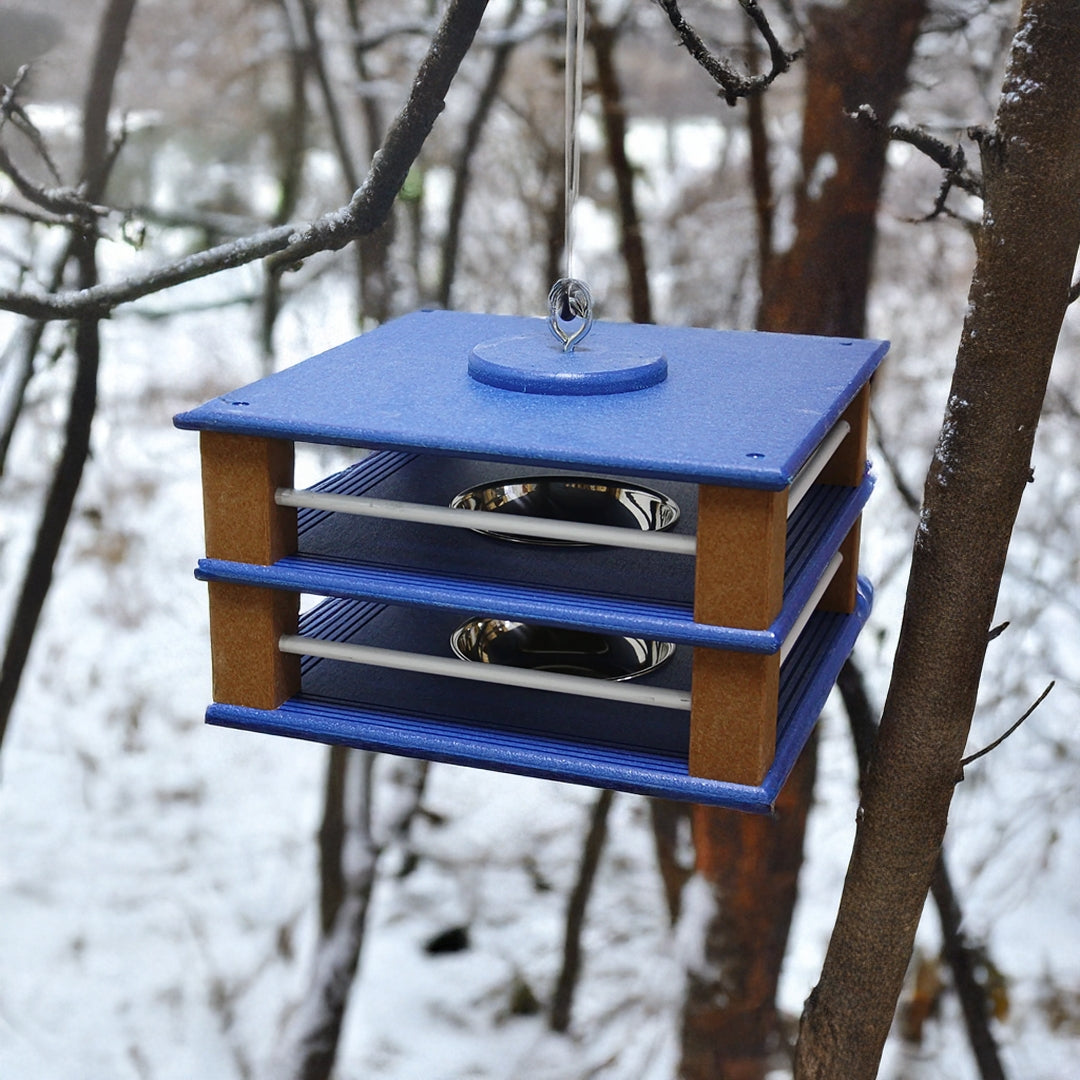There's been much debate on the issue - feeding live or dried worms. Which are really best for bluebirds?
Feeding Dried Versus Live Worms
 While we're not scientists with all of the specific nutritional data - bluebirds do eat both and have been for years. As backyard bird feeding becomes more and more mainstream, dried mealworms are commonly found in the pet food aisle of some larger grocery stores.
While we're not scientists with all of the specific nutritional data - bluebirds do eat both and have been for years. As backyard bird feeding becomes more and more mainstream, dried mealworms are commonly found in the pet food aisle of some larger grocery stores.
Social media and backyard birding: There's some really interesting birding groups on social media, with great (and occasionally not so great) advice from members. Several bluebirds groups, purple martin groups, hummingbird fans... take your pick!
The mealworm debate: Recently on one of the bluebird groups, the question arose: "dried or live worms?" Several negative comments on the dried - mainly the fact that many dried mealworms come from China, and to be careful.
Truth is... 95% are sourced from China, and that seems to be fine as nobody (that we've ever heard) has ever reported health issues or concerns over this fact.
Economics Plays a Role
Economics plays a role as worms are mass-produced, imported and sold for a much lower cost than live worms grown here in the US. Live worms themselves aren't the issue with cost... but the overnight shipping required to guarantee a live and healthy delivery can get pricey.
Bulk quantities are always smartest (you'll pay less for shipping) but there's storage in the fridge and handling with which to contend. Some folks simply prefer to avoid this aspect all together. Curious what to do with and how to store live mealworms when they arrive?
It Can Be a Welcome Treat
 If your bluebirds have never been offered live worms, the dried would definitely be a welcomed treat! Easily add moisture to dried worms making them even more appealing by steeping the worms for a few minutes prior to feeding.
If your bluebirds have never been offered live worms, the dried would definitely be a welcomed treat! Easily add moisture to dried worms making them even more appealing by steeping the worms for a few minutes prior to feeding.
Simply place dried worms in a coffee mug, add boiling water and let sit for 3-4 minutes. Drain water and they're ready to go! Fancy feeder not necessary. Place in a dish right on the deck rail, tack a plastic container to a tree. Mix them on a platform feeder, birds will find the tasty treat.
You may even find too many other birds are getting the goods- which is when you might need an enclosed bluebird feeder. This might take some patience and training but bluebirds are worth the effort!
Bluebirds May Be a Bit Picky
Should your blues be spoiled and lucky enough to receive live worms every day - they might be a bit picky if switching to dried. Steeping or softening the worms helps, and slowly switching by adding some dried worms to the live ones should get them accustomed.
Heated Bird Baths
 In our own GA backyard, we offer both to bluebirds and they stick around all year. Heated bird baths keep them happy too. Bluebirds are considered resident birds in more northern states than you'd think! Supplemental feeding in winter helps them thrive. Never gather or offer earth worms to bluebirds... they can cause stomach issues resulting in the runs :(
In our own GA backyard, we offer both to bluebirds and they stick around all year. Heated bird baths keep them happy too. Bluebirds are considered resident birds in more northern states than you'd think! Supplemental feeding in winter helps them thrive. Never gather or offer earth worms to bluebirds... they can cause stomach issues resulting in the runs :(
Braving winter storms and frigid temperatures, they're hearty birds who could definitely use some help in winter when natural food sources are scarce. Especially early-breeding pairs who have mouths to feed come late February or March when weather is still horrid :(
Help Feathered Friends By Offering High-Fat Foods
So yes... go ahead and try those dried mealworms! Suet, shelled peanuts, and sunflower hearts (also called chips or meats) are ideal for winter feeding... for all of your resident birds. As temperatures plunge across most of the country, you can help feathered friends thrive by offering these high fat foods and a consistent fresh water source.
Don't forget the housing as bluebirds (and purple martins) are already scouting the best digs and claiming territory... even with snow on the ground!


